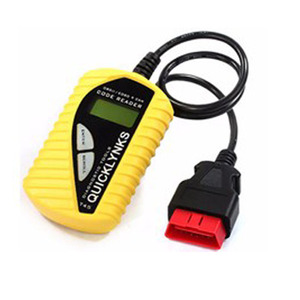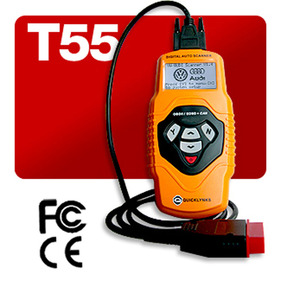(63 products available)































































































































































































































There are several types of VAG EOBD readers. Below are the various types:
VCDS:
This is the main VAG EOBD tool. It is developed by Ross-Tech. The tool is used to diagnose and configure VAG cars. Also, the tool supports all VAG cars from 2000 to the present. VCDS is a powerful tool. It can read and clear codes. It can also live data, perform tests, and adaptments. In addition, it has a graphical user interface. This makes it easy to use.
VCDS Lite:
This is a lighter version of VCDS. It is used for VAG EOBD cars. It is less expensive and has limited features. The software is used to diagnose and configure VAG cars. It supports VAG cars from 1996 to the present. The software can perform basic diagnostic functions. Some of the functions include reading codes, clearing codes, and basic measuring values.
VAS 5054A:
This is a professional VAG EOBD tool. The tool is used by VAG EOBD dealers and workshops. It is used to diagnose and configure VAG cars. The tool has more advanced features. It can perform complex diagnostic functions. Some of the functions include coding, programming, and configuring control units.
OBD11:
VAG OBD11 is a mobile app. The app is used for VAG EOBD cars. It is used for diagnostics and configuration. The app is compatible with Android and iOS devices. It has a user-friendly interface. The app can perform basic diagnostic functions. Some of the functions include reading codes, clearing codes, and measuring values.
Carista:
VAG Carista is a mobile app. It is used for VAG EOBD cars. The app is used for diagnostics and configuration. The app is compatible with Android and iOS devices. It has a user-friendly interface. The app can perform basic diagnostic functions. Some of the functions include reading codes, clearing codes, and measuring values.
The VAG EOBD specification is not just important for commercial buyers, but also for the car manufacturers who need to implement it, and the suppliers and partners who need to work with it. Here is why it is important:
Compliance
Regular compliance checks are key to maintaining the VAG EOBD specification. This involves ensuring that vehicles built meet local emissions regulations and that diagnostic tools comply with the requirements set by the authorities. This helps avoid the legal consequences of non-compliance, such as fines and reputational damage.
Quality
Quality assurance processes are essential for meeting the VAG EOBD specification. This involves monitoring the quality of vehicles and diagnostic tools throughout the production process, as well as in service. This helps to avoid costly mistakes, such as recalls or warranty claims, that can affect the business's bottom line.
Innovation
VAG EOBD specification monitoring enables the early identification of changes in emissions regulations and diagnostic tool requirements. This allows companies to prepare for upcoming changes and invest in new technologies and capabilities. This helps stay ahead of the competition and meet customer needs.
Below are some of the ways to maintain VAG EOBD compliance.
Choose the right VAG EOBD scanner by considering the following:
By considering these factors, businesses can choose the right VAG EOBD scanner that suits their needs, ensuring efficient diagnostics and communication with VAG vehicles.
The VAG EOBD port is standardized across all vehicles and doesn't require any special tools to access. Any car with an OBD-II port allows for access to VAG EOBD. To use the VAG EOBD on such cars, just follow the steps below:
Connect the VAG EOBD Scanner
Users should connect the VAG EOBD scanner to the VAG EOBD interface, which is located beneath the dashboard, close to the steering wheel. Make sure the scanner is properly aligned with the port's shape and doesn't exert too much force.
Turn on the Ignition
Users should turn on the car's ignition without starting the engine. This provides power to the vehicle's electrical systems and enables communication with the scanner.
Select the Desired Function
At this point, users can select the desired function or system to diagnose or interact with on the VAG EOBD scanner. Options may include reading or clearing error codes, accessing live data, or performing special functions. The available options depend on the specific capabilities of the connected scanner.
Follow On-Screen Instructions
Users should follow the on-screen instructions provided by the VAG EOBD scanner for the selected function. Navigate through the menus using the arrow keys and make selections using the appropriate buttons. Additionally, the scanner's display will provide relevant information, such as error codes, live data, or available options.
Q: Does VAG EOBD require an internet connection?
A: No, VAG EOBD does not require an internet connection. It is a standalone diagnostic tool that connects directly to the vehicle's diagnostic port.
Q: Is VAG EOBD compatible with all vehicles?
A: VAG EOBD is specifically designed for Volkswagen, Audi, Seat, and Skoda vehicles. It may not be fully compatible with other brands or models.
Q: Can VAG EOBD be used on older vehicles?
A: VAG EOBD can be used on older vehicles that comply with the VAG EOBD standards. However, its functionality may be limited on some very old models.
Q: Is VAG EOBD easy to use?
A: VAG EOBD is designed to be user-friendly. It typically has a simple interface, and many models offer plug-and-play functionality. However, some basic diagnostic skills and knowledge are required to interpret the results.